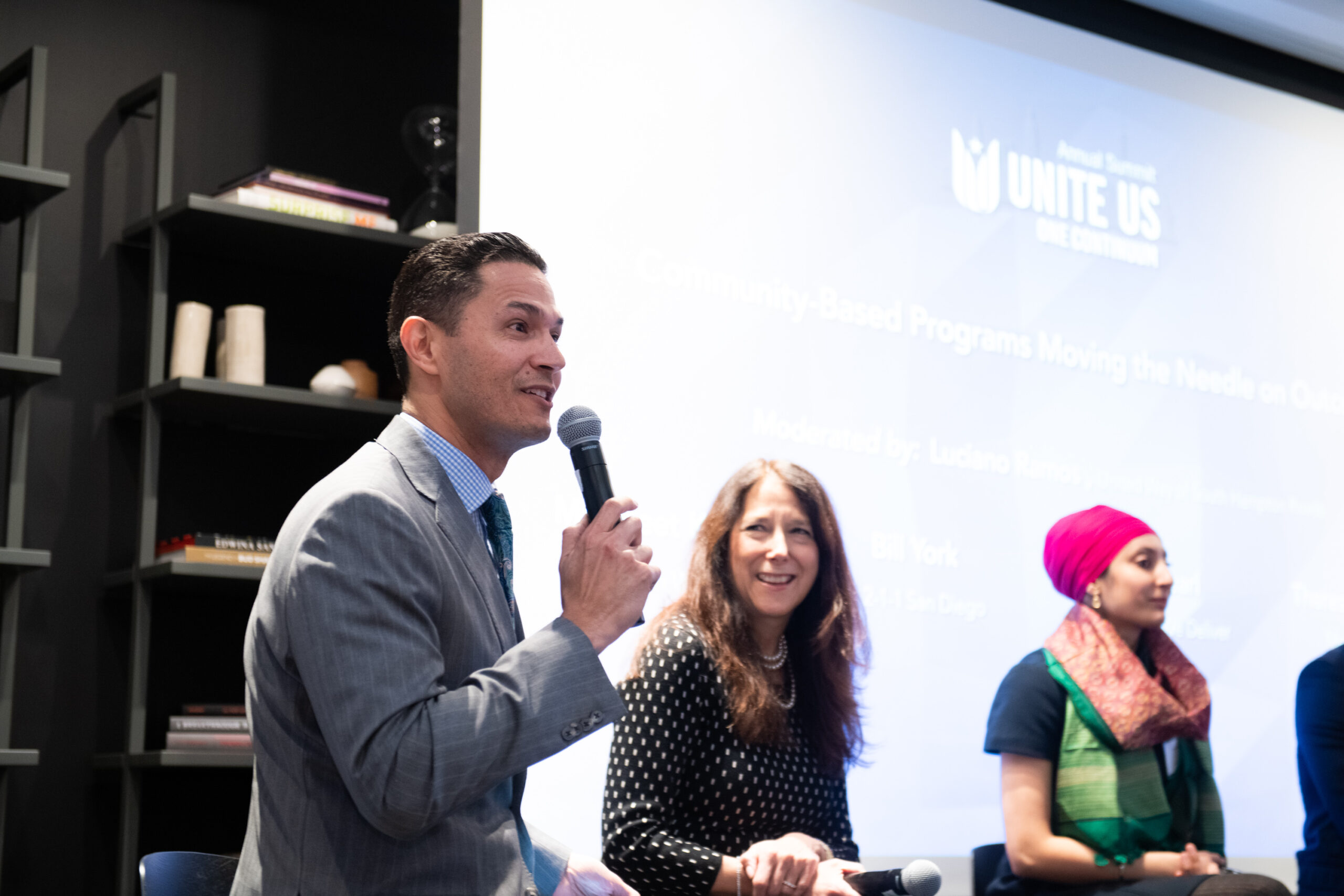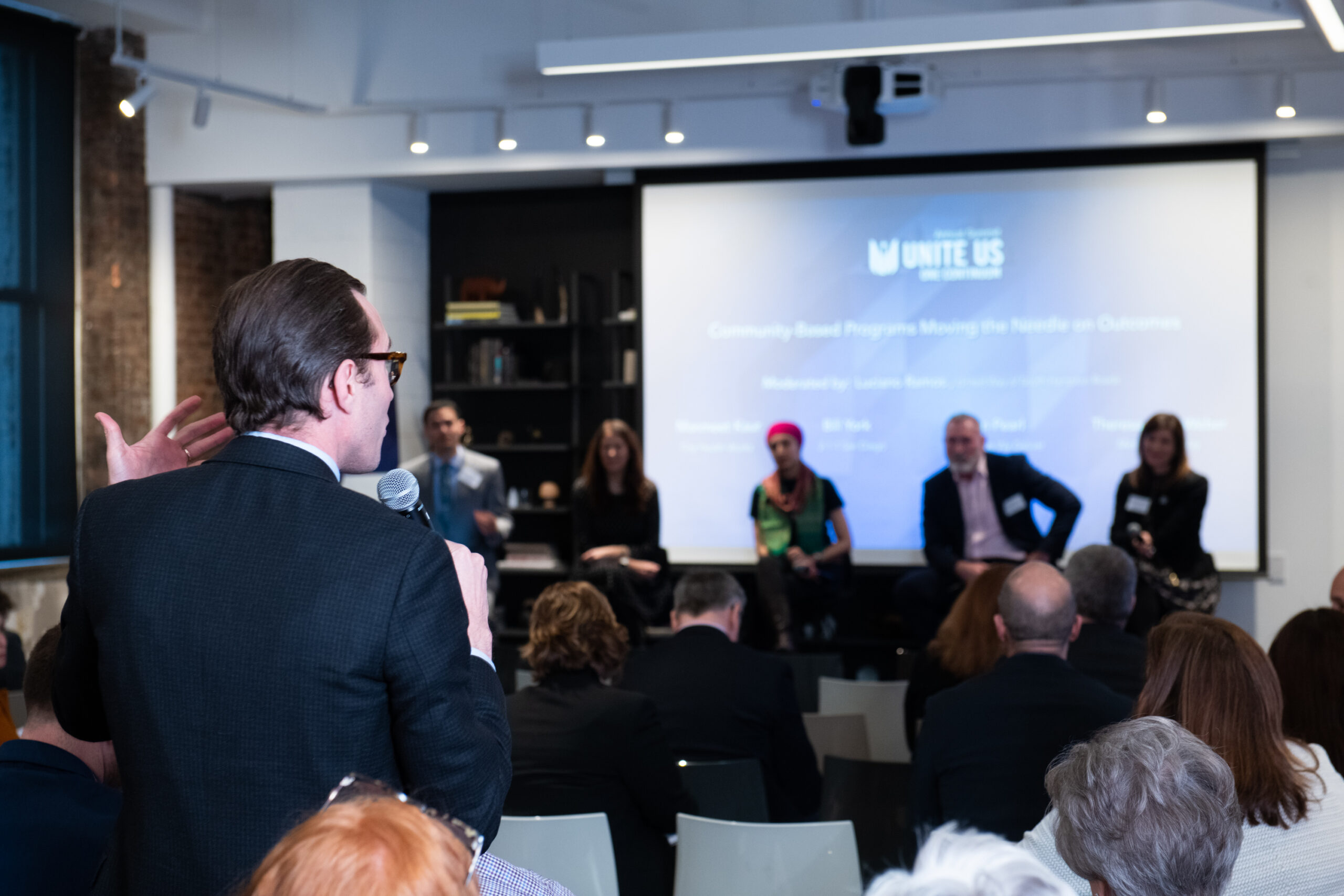
Cross-Sector Collaboration: Building the Right Infrastructure
Ally Pratt
One Continuum is about connecting across sectors and service types to provide whole-person care for the people who need it most. As discussed in our last article in this series, Phase One was all about fostering meaningful relationships with the people in your community to bring this work to life. We need to recognize and identify the othersaround us striving for the same goals and work together – meaningfully – to accomplish those goals.
Phase Two is about planning your approach and setting up a solid foundation for community-wide success.
I have the right partners. What’s next?
Carefully build the right infrastructure.
1. Have you identified gaps in service availability across your community?
Every community struggles with health disparities and inequities. Properly identifying them is a crucial stepinthe journey to addressing them. At One Continuum, Luciano Ramos, Vice President of Programs and Integration at United Way of South Hampton Roads, talked about how his organization started a transformational process around eight years ago based on what they learned about their role in the community. Regarding their shift toward collaboration and innovation, Luciano explained that:
“We got pulled into the whole world of collective impact because the community asked us to. The leaders in the community saw challenges and they didn’t know who was well-positioned to be able to address those challenges.”
The United Way was able to listen directly to the voices of their community to learn about their needs and challenges. This helped them understand where to focus to actually address the root causes of poor health outcomes. Luciano said:
“We realized that we were really good at providing services to people living in poverty, but we were not so good at moving people out of poverty. We realized that we needed to change things up dramatically.”
This mindset shift is what’s catalyzing collaboration across the country. Once you find the source of an issue, you can start measuring the impact of your pursuits – what works, what doesn’t, and what you might want to try next. Once Luciano’s organization started gathering more data and providing their partners with a platform to communicate, he received more feedback that they could use to inform decisions and improve their approach. Start leveraging the expertise of your partners. Every community is unique. What vulnerable populations exist in yours and what services are they seeking? It may be time to start approaching these strategically.

2. Have you assigned roles and responsibilities for each partner? Is there one champion organization, and if so, which organization will play that role?
During the planning stages, it’s a good idea to establish the strengths and service domains of each partner. The purpose of banding together is to allow every organization to focus on their specialties without being spread thin. At One Continuum, Theresa Reno-Weber, President of Metro United Way, explained this concept perfectly. She brought up the idea of bringing partners together in a “systems approach” where they can each lean into their own expertise. She explained:
“If you’re a phenomenal food delivery program or you’re a phenomenal housing partner, you don’t also then need to become excellent at childcare and excellent at making sure that folks are getting the medications that they need. We really need each of our organizations to live to their full potential so the individuals they’re serving can live to theirs.”
In addition to letting each organization in a network focus on their individual specialties, it’s essential to keep the person receiving services at the center of any care delivery system. As expressed by Rachel Krausman, Sr. Director, 2-1-1 at United Way Worldwide, in a discussion about who should be in charge of this approach to whole-person care:
“I think the individual patient is in charge. At the end of the day, we as CBOs, as technology companies, as healthcare providers, can go into a community and decide we’re in charge or we can decide to partner and that no one’s in charge… but unless you’re physically dragging your patient through the social services system every minute of every day, they’re in charge of whether or not they’re going to be healthy or access care. I think our job is to reduce the friction and how hard it is.”
While constructing or reconstructing a system of care in any community, keep the end goal in mind. Like Rachel said, if you’re not paying attention to the individuals you’re serving, you won’t be successful. We need to listen to the voices of the people seeking services. Only then can we set up a system where all partners are empowered to succeed.
3. What tools are currently being used to coordinate care in your community?
There are a number of different approaches to coordinating care from local, state, and national levels being used today. This isn’t a simple task for one tool to take on, but that doesn’t mean that you shouldn’t investigate the power of technology in your endeavors to coordinate care. At One Continuum, Erika Ferguson, Director of Healthy Opportunities at the North Carolina Department of Health and Human Services (NC DHHS), told a story of her organization’s journey to redefine care delivery:
“When we started thinking about this work in the summer of 2017, we had about 80 stakeholder interviews with different organizations and folks across the state who were already doing this work in their community… the one overarching theme across all of those was: there’s no infrastructure for us to connect with and work with the healthcare system – or if they were healthcare, with the community. We have no way of seeing our patient or client as soon as they leave our four walls.”
Luckily, the NC DHHS found that infrastructure. They went on to create NCCARE360, a statewide coordinated care network that helps health and community-based organizations make electronic referrals, communicate in real time, securely share client information, and track outcomes together. NCCARE360 has demonstrated that cross-sector collaboration and care coordination don’t have to be limited to any one service area, geography, or population type. With the right tools, anyone should be able to coordinate high-quality care.

4. How do you plan to secure sustainable funding for this initiative?
One barrier to addressing health across service types is being able to secure the right resources and funding. This looks different for every organization type. Nonprofits face several challenges when it comes to funding, especially the impact of changing government regulations and tax reform. At One Continuum, Bill York, Executive Vice President of 2-1-1 San Diego, described his thoughts about his organization securing funding. He believes in a philosophy of: “Don’t do more with less, do more with actually appropriately funding [CBOs] so they can have the best technology.” To him, this means equality around “the way that we look at our social services and community-based organizations… and that starts with philanthropy, it starts with government.”When funding challenges arise, it may be time to investigate more progressive methods. Focusing on system-wide funding opportunities, rather than grant-based, will provide a sustainable path forward, lead to innovation in service delivery, and enable the ability to impact health at the local level.
In a similar sentiment, Rachel Krausman expressed frustration with the way that funding is structured for nonprofit organizations. She said:
“The capacity to actually innovate and take a chance requires unrestricted funding that you can make decisions with. A lot of the challenge, for not just a United Way or a 2-1-1 but any nonprofit, is that all of the funding we have comes with a lot of strings, and a lot of requirements, and a lot of deliverables, and a lot of actions. It’s often too difficult to access funding for something we think might work that we want to try because we haven’t proven it yet.”
She pushed for reconsideration of the way her organization and others like it are funded. Sharing payments and risks with other partners, especially in healthcare, would likely benefit them and allow for a more comprehensive payment model. Laura Sankey, VP Product Strategy & Social Determinants of Health at Centene, also commented on broadening the scope of funding community efforts and said:
“What I’m focusing on in my national partnerships around social determinants is trying to get them to think of that value-based methodology as well. For folks that are maybe used to getting grants or getting philanthropy dollars, trying to have that conversation with them to move them towards this idea of value; that it’s not just a flat dollar, and here’s what we’re trying to drive to, and here are the outcomes, and here’s how we’re going to measure this – it’s a new conversation for them.”
The shift in healthcare from fee-for-service to value-based care is paralleled by a shift in the community from restricted funding to funding streams that incentivize innovation. To drive real impact, we need to compensate organizations appropriately. We need to support all partners in getting to the same table. Funding nonprofits fairly for the work they do is a step in the right direction.

5. How are you aligning incentives for each partner?
In order for all partners to share risks and be equitably compensated for their work, they all need to start on the same level. What capacity challenges does each partner currently face? What ability does each partner have to collaborate? What is each partner being paid for? When we can ameliorate these differences, we can succeed together. Theresa Reno-Weber touched on one underlying reason for misalignment across sectors:
“It goes back to trust. Right? I mean like, these big organizations are – I think – skeptical and risk-averse from going into partnerships with nonprofit or community-based organizations because they feel like the rigor and the security of those organizations are not up to snuff with their own. And in many cases, they’re right. I mean, we just haven’t ever invested in that. So, there is some work to be done, I think, on the community-based organization side to figure out how to prepare yourself to be able to go into those agreements in a way that’s going to give both sides the comfort that they need to sign them.”
In order to meet your partners where they are, you need to be transparent about your own strengths and weaknesses. We need to create a common language around care delivery that all partners understand. In a landscape that has traditionally been divided, there are bound to be hiccups in bridging the gap between health and social care. Behavioral health, clinical, and social service providers all use their own words and workflows, but the common thread is a desire to increase health and health opportunities. When we recognize that commonality and align our businesses around it, we can begin to galvanize alliances across the continuum of care.
In what ways have you begun to formalize cross-sector collaboration in your community?
About Unite Us
Unite Us is the nation’s leading software company bringing sectors together to improve the health and well-being of communities. We drive the collaboration to predict, deliver, and pay for services that impact whole-person health. Through Unite Us’ national network and software, community-based organizations, government agencies, and healthcare organizations are all connected to better collaborate to meet the needs of the individuals in their communities.




